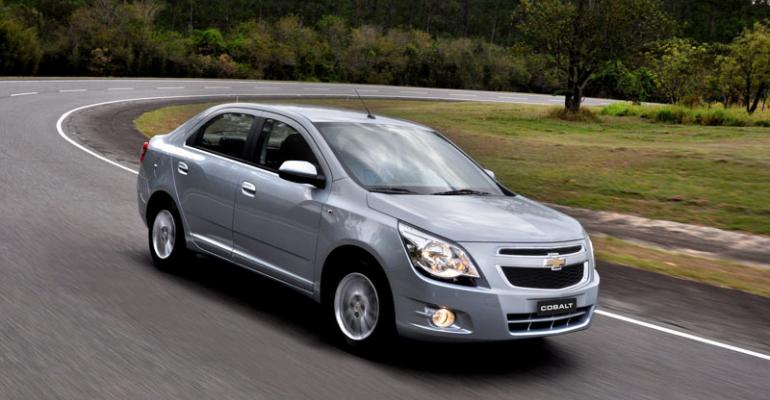General Motors product boss Mary Barra says the U.S. auto maker is on time, and in some cases ahead of schedule, on a 7-year global vehicle-platform-consolidation initiative expected to save billions of dollars in development costs.
Barra, senior vice president-global product development at GM, tells Wall Street analysts today the auto maker expects to reduce the architectures underpinning its vehicle to 17 in 2018 from 30 in 2010. The plan would move 96% of GM’s forecasted global production volume to core platforms, from 39% in 2010.
The auto maker currently uses core architectures for 71% of its global vehicles, she tells the analysts gathered at GM’s Milford, MI, proving grounds for business updates and a product showcase.
That’s ahead of the schedule calling for about 60% of vehicles off of core platforms at this time. GM originally expected 90% of volume to be underpinned by core architectures in 2018 and now sees them accounting for 96% by then.
GM also will move regional architectures from 22 today to four in 2018. “We’re on track with our plan,” Bara says, noting the auto maker continues to find new consolidation opportunities.
Regional architectures are older platforms generally used in emerging markets that are more price-sensitive, where the technology and capabilities are competitive and a cost advantage exists.
Core architectures are newer platforms, such as the underpinnings on the newly launched Chevrolet Cobalt, Onyx and Spin B-segment in Brazil, all of which represent a leap forward for car buyers in those segments from what GM may have previously offered.
Barra says GM’s plan to reduce its engine architectures also remains on track, moving from about 15 today to 10 in 2018. “It’s turning out even a little bit better than we estimated,” she says.
Consolidating vehicle and engine architectures saves GM billions of dollars by using more common parts and components, which drive purchasing scale and thus reduce costs. It also cuts spending on extra engineering for a single product sold in multiple countries, with varying consumer and regulatory demands.
Performance improves, too, because engineers design one part for a vehicle instead of multiple variants.
GM says it can use overall cost-savings to offer more appealing content to customers.
The auto maker has been working on platform reductions for a number of years and at one point was seen as an industry leader in the effort before its cash crunch and bankruptcy stalled product development.
Volkswagen arguably leads in consolidation efforts today with the rollout of its MQB flexible vehicle architecture, expected to underpin everything from the brand’s Polo B-car to midsize vehicles such as the Passat.
Analysts see MQB generating an estimated aggregate cost-savings of $17 billion for the growth-minded German auto maker by 2019. GM does not detail costs-savings from its platform-consolidations program.
Barra says GM designs its vehicles more smartly today than just a few short years ago to drive parts-sharing and cost-savings.
For example, the auto maker re-engineered its front knee airbags to ignite from the bottom of the instrument panel instead of the rear. It trimmed design iterations from 11 previously to one today for each of the 3.2 million products annually requiring the safety device.
GM expects a 16% cost-reduction from the airbag redesign next year and 21% by 2017.
“It is just one example of what we are doing with every component and sub-system across the vehicle,” Barra says.
The auto maker is gaining other efficiencies in parts and components usage, such as logistics. Bara points to the ’14 Chevrolet Malibu, which drew suppliers of large interior-trim pieces to its Fairfax, KS, assembly plant from sites as far as 700 miles (1,127 km) away.
This, alone, will save GM $66 million over the lifecycle of the product and save $31 per vehicle.
In addition to Barra, Cadillac global marketing chief Bob Ferguson details the brand’s aggressive growth plans for analysts at today’s event.
GM expects to increase Cadillac sales 50% in China to 50,000 units this year and triple its retail outlets to 200 from 70, he says. The auto maker will break ground on a new plant next week, which will fuel a tripling of its sales volume in the country by the end of 2015.





